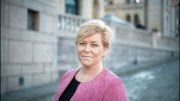The global wine industry has now realised that it must take steps to protect itself from climate change and global warming.
From South Africa’s drought-lined vineyards to France’s châteaux’ and sunny vineyards in Australia and California, wineries say that they are now seeing the effects of rising temperatures, and that changes in weather patterns are becoming increasingly serious.
Thus, they have begun to take steps to protect their industry by, for example,moving to cooler areas, planting more hardy grape varieties that can withstand heat,and protecting the grapes with more shade.
Eventually,areas that were previously ideal for certain types of grapes are now
less so.Because the grapes ripen more quickly, the harvest must take place earlier and the quality of the wine is deteriorating.
For example, an area such as the Van Duzer Corridor in Oregon, a good distance north of the wine districts of California, is more relevant as a wine district.
Cooling wind from the sea
The Duzer corridor was formerly known as a wine district, but the Pacific Ocean breeze that sneaks in over the solar thermal wing in the afternoon has made the area to reach a status as one of America’s newest official wine districts.
Such a label allows the wineries in the area to emphasise the unique characteristics
of their wine,which is determined by climate, geography, soil, and other factors.
“Although we also have heat waves like Napa and Sonoma, we can count on the cool
afternoon breeze, cooler temperatures at night and fog in the morning,” said Ria D’Aversa at McEvoy Ranch in Petaluma, Northern California.
Official wine areas
Petaluma recently gained status as the United States newest official wine area.
At a winery in California,Ehren Jordan said people would look at you as if you had
three heads if you had said that you should grow wine in Oregon 30 years ago. But now he has bought 32 hectares of land in the Van Duzer corridor and started a new vineyard there.
Grapes can withstand hot and dry weather, and the production of grapes in dry landscapes is traditional in some places in Europe. But the last four years have been the warmest so far in history, and more heat is expected.
1,200 meters above sea level
For example, the Spanish family,Torres, who have vineyards in Spain, California and
Chile,have now bought land 1,200 meters above sea level in the Pyrenees as an investment in a cooler climate.
Due to rising temperatures, harvest is ten days earlier than 20 years ago, according to company manager, Miguel A. Torres, and he calls climate change a very serious global problem for wineries.
In South Africa, severe drought has led to 15% lower profits, which means researching other types of grape. In France, the industry have begun cultivating grapes in Brittany,which was previously not suitable for wine production due to wind from the Atlantic,rain and lack of sun.
© NTB scanpix / #Norway Today




